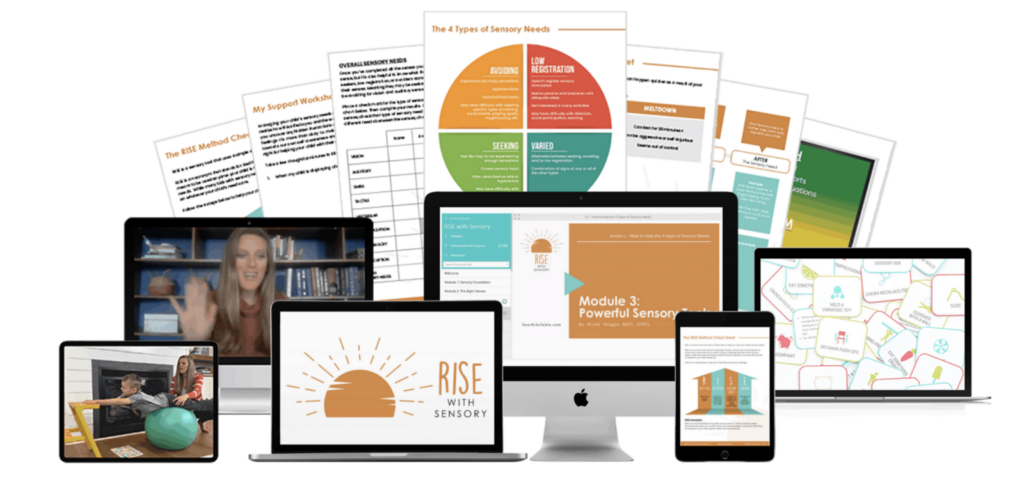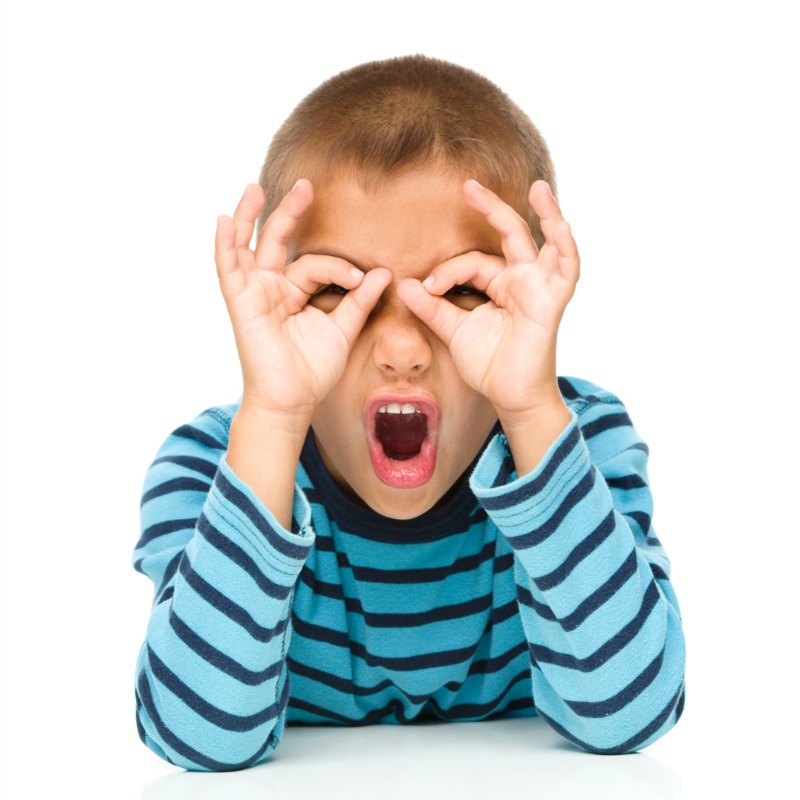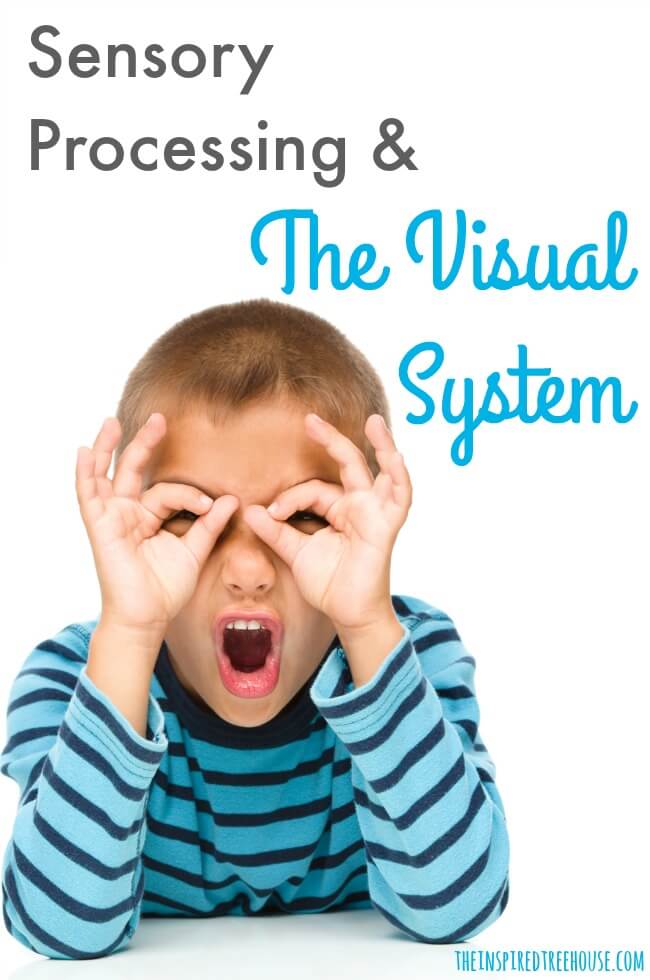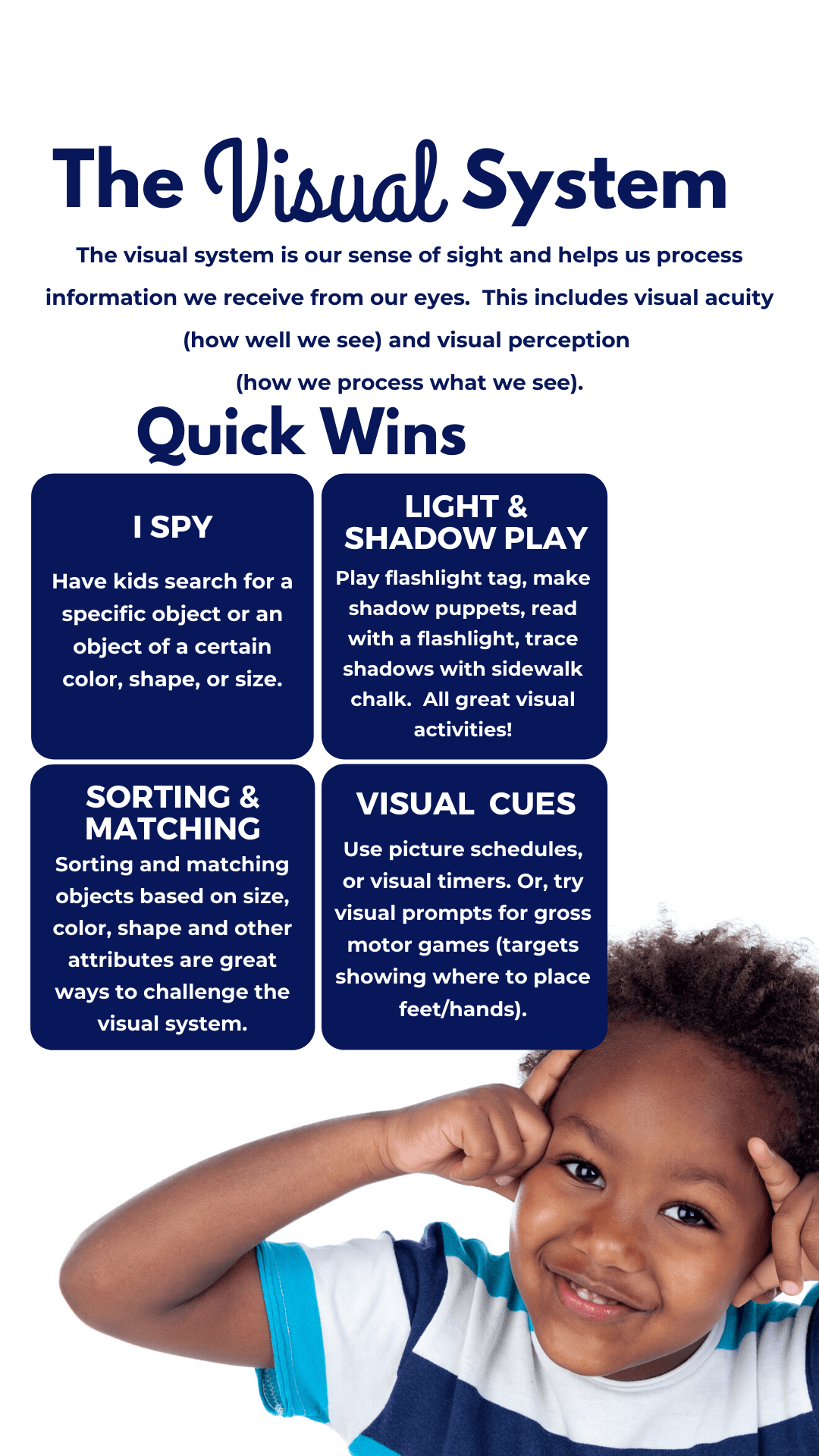Learn more about the visual system and how our sense of sight can have a huge impact on functional performance during day-to-day activities.
This post contains affiliate links. Read more.
About Vision…
The sensory organ of the visual system is the eye. The eye and the brain communicate and work together to help us interpret our physical surroundings using sight, or, what we see. This happens through interpretation of light.
Light rays follow a path through many different structures of the eye, finally reaching the visual cortex in the brain. Here, the object is identified and given meaning. This includes details regarding color, three dimensional depth perception, where the object is in space, memory of the image, and gives the image context in the environment. Read on to learn more!

RISE With Sensory Course
Are you ready to learn powerful sensory strategies to support kids’ sensory needs so they can RISE to their full potential?
Whether you’re a parent or a professional, this course is for you!
The RISE With Sensory Course is This class is AOTA approved for 7 hours (.7 CEU) and is the perfect starting point for new therapists, or refresher for experienced therapists.
Looking for a streamlined approach for working with kids with sensory concerns and for communicating clearly with parents and caregivers about sensory processing?
Click here to learn more!
A Healthy Visual System
Vision is closely integrated with all of our other senses. If we see freshly baked cookies, we become hungry as our sense of smell and our taste buds kick in! If we see a large spider, our tactile system goes to work – we get goosebumps and may feel a sense of fear. Vision helps us process, understand, and take action in our environments.
Think about all the sights to be seen!! Look around you, there are thousands of images and details to look at in every direction. Children automatically focus in on the details in their environments that are most important at any given moment, depending on their purpose.
For example, during a game of hide and seek, kids filter out most of what they see around them except that awesome chair that they know will make a great hiding spot! When a child walks into his classroom after recess, he automatically scans the room and heads right to his desk to have a seat. Most often, vision has a purpose.
Problems With Visual Processing
Imagine that the visual system is a bike wheel. At the center of the wheel is the ability to see. All of the spokes coming off the center are the many different aspects of vision, including visual perception skills like visual discrimination, visual acuity, visual memory, visual form, visual motor abilities, etc.
There are many functions of the visual system that help our children grow, learn, and develop. These all individually play an important role. From a sensory processing perspective, issues with vision may interfere with some children’s ability to successfully engage and participate in their environments.
Visual Hypersensitivity
A child may be highly distracted by the visual stimuli around him. He may be overwhelmed by the many colors in the room, the posters or art on the walls, and the movement of others around him. The movement of the picture on the television catches his attention. He may see activity outside the window or want to count the tiles on the floor that are different colors and textures.
Because of all of these visual distractions, it may be impossible for him to focus on a task like coloring a picture. This child needs an environment that is visually simplified. He would benefit from a neat, clear area to work and a classroom without so many visual distractions. This may mean fewer posters on the wall, more uniform color in the room, low lighting, and important information presented in a bold color. He may need a privacy divider to do his best work in a busy room. When receiving directions, he may benefit from the adult establishing eye contact with him first, ensuring that he is listening and attending.
Visual Hyposensitivity
The opposite of this child is the one who is visually under stimulated. He barely notices his surroundings unless details and objects are pointed out to him. He may stare at the same point for extended periods of time. He gets lost in a visual activity quickly and loses interest. This child needs a visual boost! He needs more visual stimulation in order to function. He may benefit from a bright piece of paper under his work to help him with paying attention and learning materials that are written in bright, large, or bold font. This child typically does well with online learning and applications that use movement and color. Visual sticker charts keep this child motivated. He needs to see more to stay alert.
The visual system can also play a role in execution of gross motor skills. Learn more about the link between vision and balance.
Our Favorite Visual Activities for Kids
Most children develop a strong visual system simply through engaging in play activities that allow for visual exploration in their everyday environments. There are many activities that can help promote the development of a healthy visual system, including:
Scavenger Hunts
I Spy Games
Partner Painting
Puzzles
Mazes
Picnic Drawing Activity
Spot It
Seed Collections
Hidden Pictures
Color By Number
Connect the Dots
Mirror, Mirror
Word Searches
Word Scrambles
Who’s Missing?
Don’t forget to click over to Lemon Lime Adventures to read Dayna’s take on the visual system from a parent and educator’s point of view!




[…] The Inspired Treehouse, where they are sharing their tips as Pediatric therapists to explain the Visual System and why they feel it is important to the growth and development of all […]